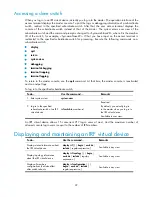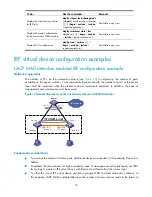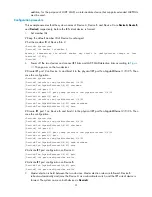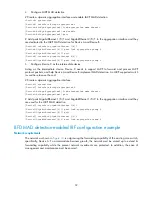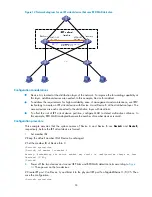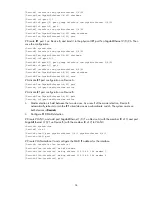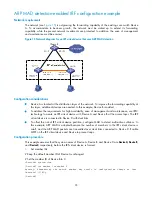
20
Configuring LACP MAD
CAUTION:
If the intermediate switch is in an IRF virtual device, you must assign this virtual device a different
domain ID than the LACP MAD-enabled virtual device to avoid false detection of IRF partition.
LACP MAD detection mechanism
With LACP MAD, an IRF member switch sends extended LACPDUs with a TLV that conveys the domain
ID and active ID of the IRF virtual device for detecting an IRF split. The domain ID uniquely identifies an
IRF device in the network, and the active ID is identical to the member ID of the master switch in the IRF
virtual device.
An IRF member switch compares the domain ID and the active ID in each received extended LACPDU
with its domain ID and active ID:
•
If the domain IDs are different, the extended LACPDU is from a different IRF virtual device, and the
switch does not continue to process the extended LACPDU with the MAD mechanism.
•
If the domain IDs are the same, the switch compares the active IDs:
{
If the active IDs are different, the IRF virtual device has split.
{
If the active IDs are the same, the IRF virtual device is operating normally.
1.
Network requirements
Every IRF member switch has a link with an intermediate switch, and all these links form a dynamic link
aggregation group, as shown in
Figure 8
.
The intermediate switch must be an HP switch capable of handling extended LACPDUs that carry the
Active ID field. For more information about LACP and the support of the switch for extended LACPDUs,
see
Layer 2—LAN Switching Configuration Guide
.
























